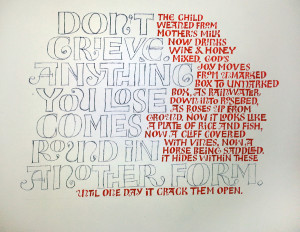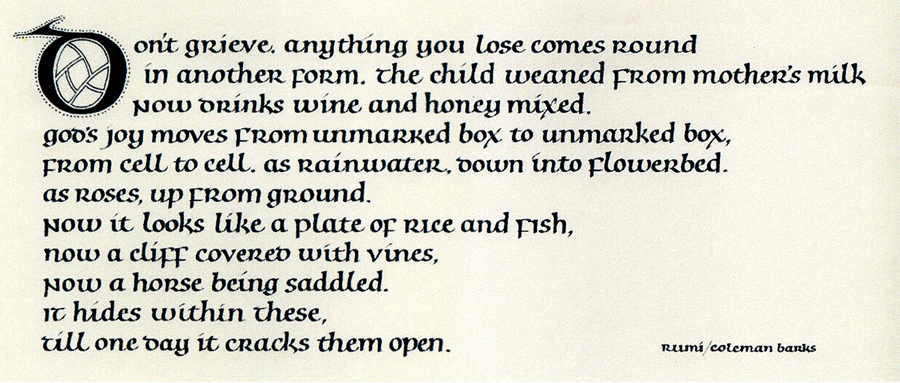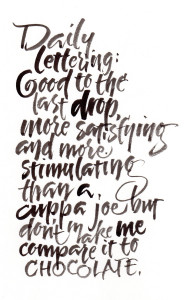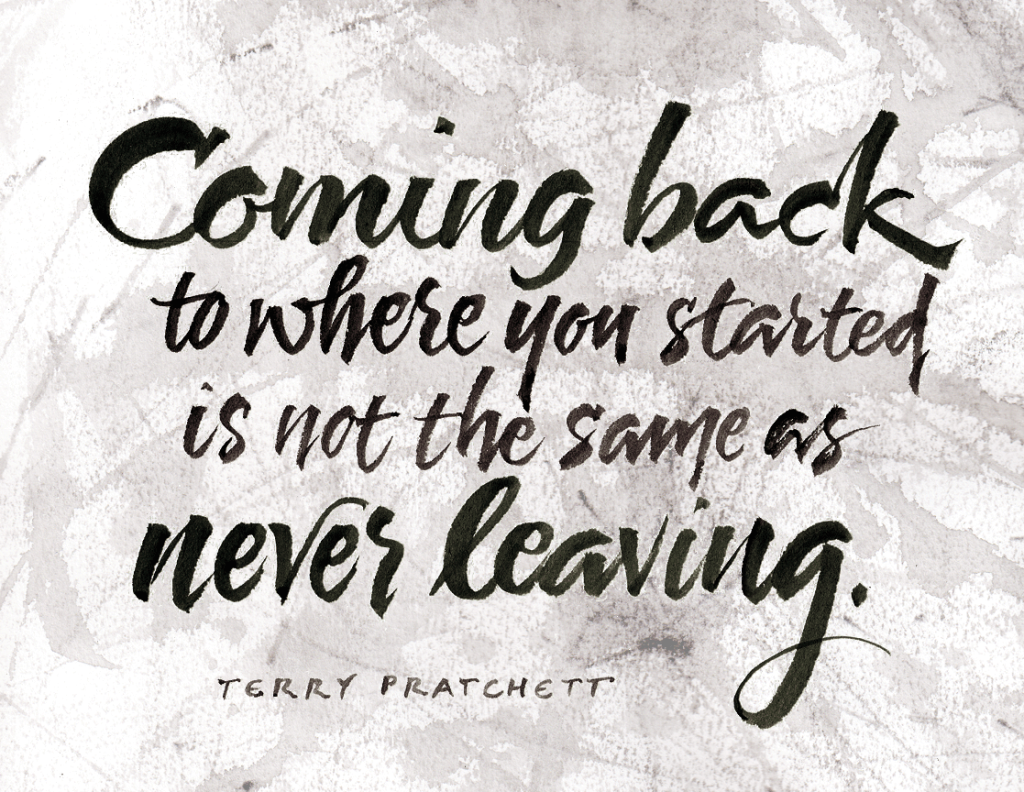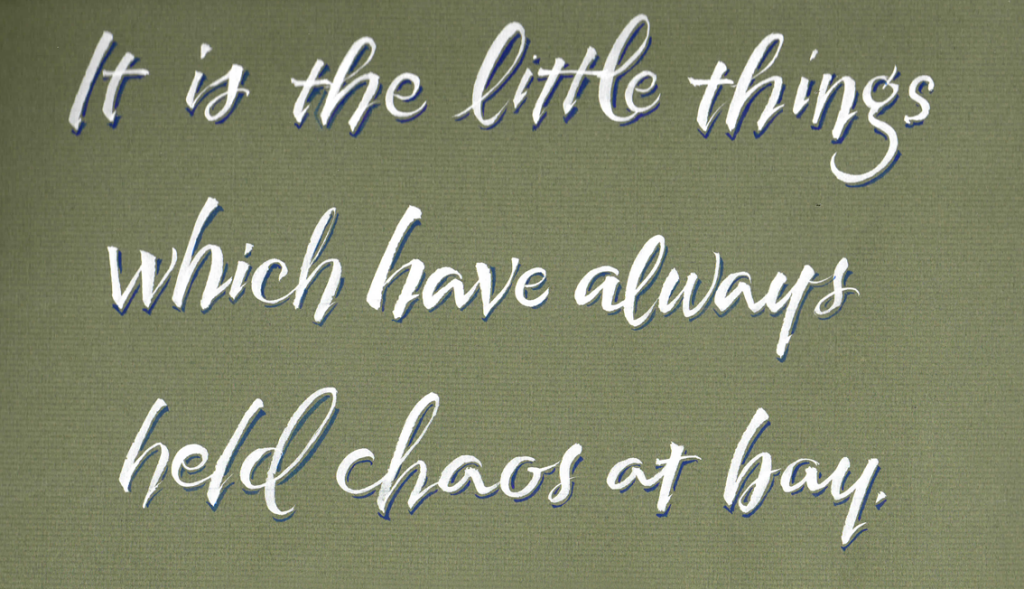I had planned to write about Irene Wellington today, but I’m still back at that page of even texture that Hans-Joachim Burgert discusses in The Calligraphic Line. I tried it again today. I have things to say about it, but most of it is on the page itself, so why repeat myself? If you want to read it, click on the image to get a larger image.
I did try to have a more open texture than yesterday, but as I progressed down the page I reverted to my “default” density, I guess. Something to work on. There’s always something to work on. There are always multiple things to work on. I was particularly aware of the left shoulders of letters like R, P, and D.
This 9″ x 12″ page (IRL the margins are somewhat larger) was BK Rives Heavyweight, which is rather grainy, especially at an x-height of something less than 1/4 inch.
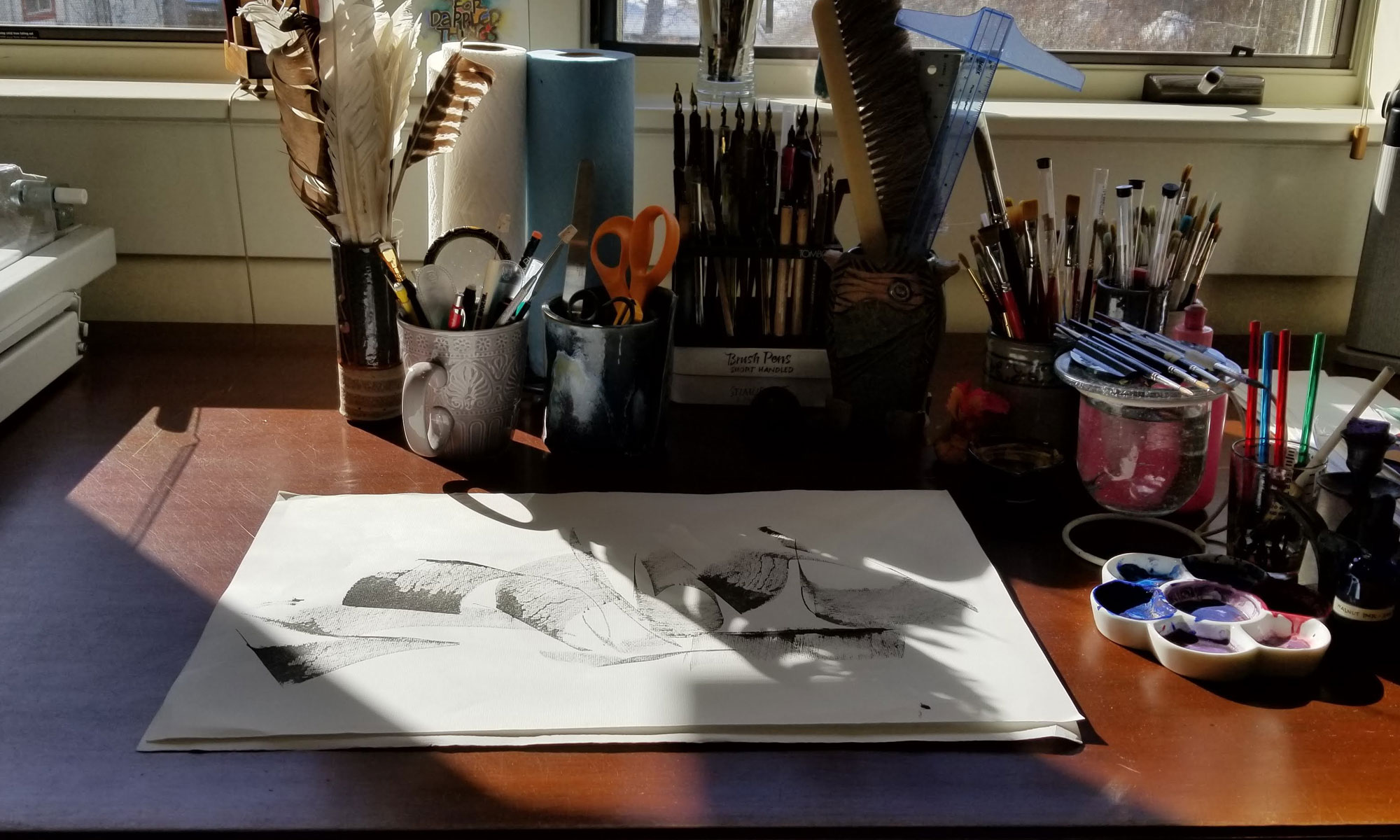
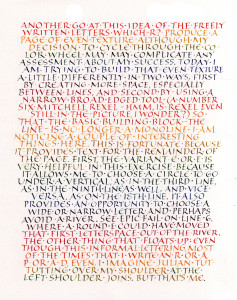

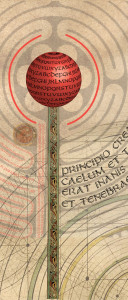

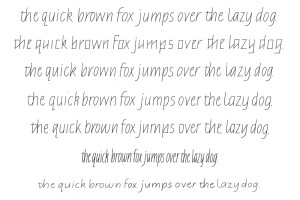
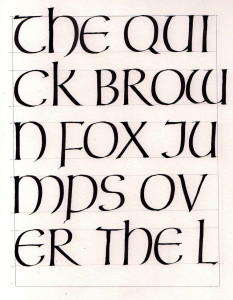 I don’t think I’ve explained that it is my intention to spend at least 30 minutes a day on daily practice. It’s a modest goal, but attainable. When the backlog of holiday-schedule chores abates, I plan to return to my one-hour minimum. Today’s lettering, shown here, is a first copy of Neugebauer’s Uncial exemplar. Although his exemplar is shown at about 11 pen-widths high, I chose to do mine at about 9 pen-widths with a Speedball “C” nib. The slightly flared finials are a Neugebauer trademark; at this size I achieved it with double strokes rather than pressure, which is what I’m sure he did. The horizontal serifs are partially drawn, although with a little practice they could be made with one stroke and some pen twisting.
I don’t think I’ve explained that it is my intention to spend at least 30 minutes a day on daily practice. It’s a modest goal, but attainable. When the backlog of holiday-schedule chores abates, I plan to return to my one-hour minimum. Today’s lettering, shown here, is a first copy of Neugebauer’s Uncial exemplar. Although his exemplar is shown at about 11 pen-widths high, I chose to do mine at about 9 pen-widths with a Speedball “C” nib. The slightly flared finials are a Neugebauer trademark; at this size I achieved it with double strokes rather than pressure, which is what I’m sure he did. The horizontal serifs are partially drawn, although with a little practice they could be made with one stroke and some pen twisting.